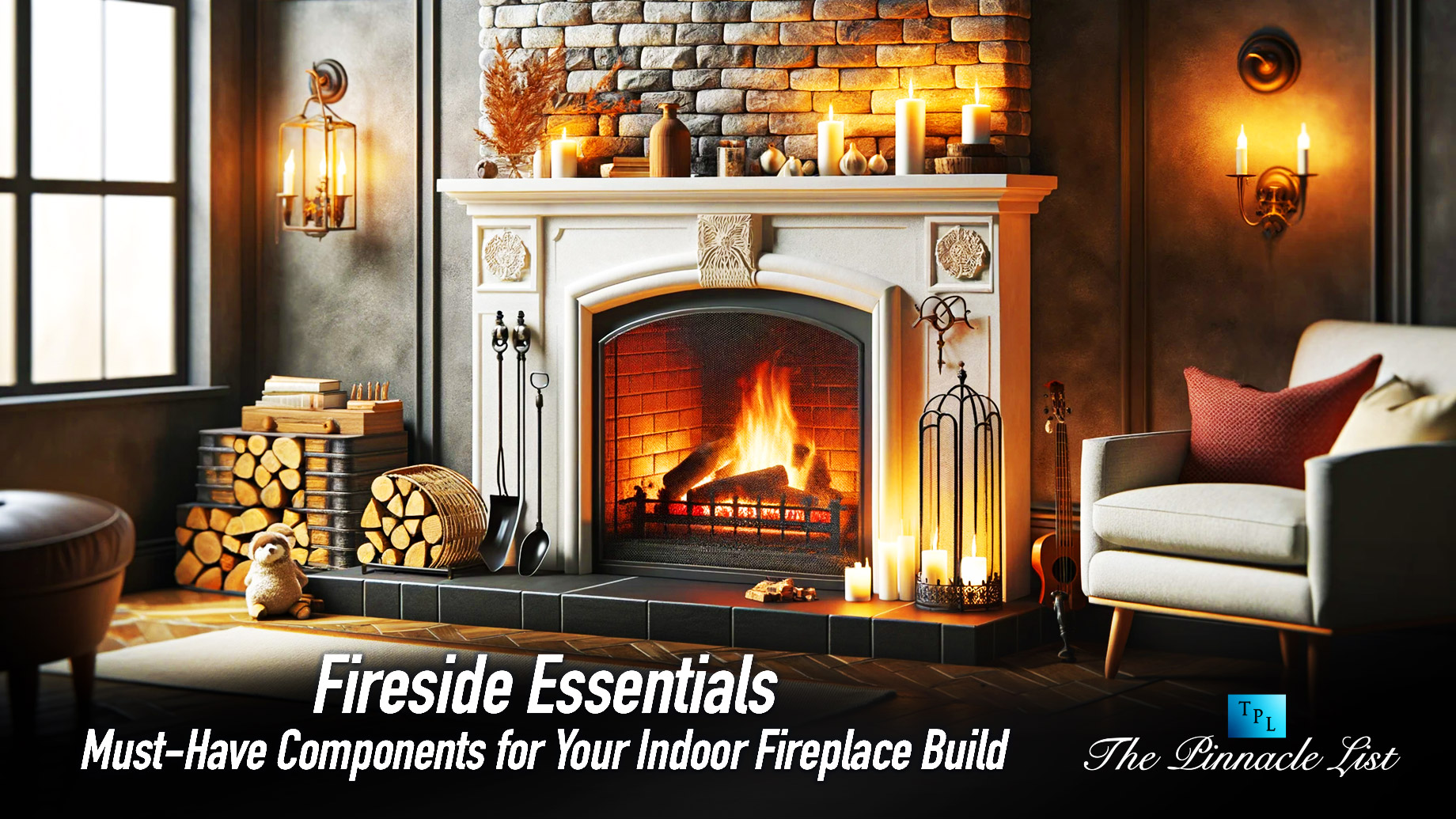
There’s something undeniably enchanting about the warm glow and crackling sound of a fire in the comfort of your own home. Whether you’re looking to create a cozy ambiance for relaxing evenings or seeking an efficient heating solution, building an indoor fireplace can be a rewarding project. However, ensuring safety, efficiency, and aesthetic appeal requires careful consideration of essential components. This comprehensive guide delves into the must-have elements for your indoor fireplace build, covering everything from fire safety regulations to chimney essentials and maintenance tips.
Safety First: Understanding Fire Safety Regulations and Best Practices
Before embarking on your indoor fireplace project, it’s crucial to familiarize yourself with local fire safety regulations and best practices. Compliance with building codes and regulations ensures the safety of your home and its occupants. This typically includes requirements for proper ventilation, fire-rated materials for surrounding walls and flooring, and installing fireproof barriers and protective screens to prevent sparks from escaping and causing potential hazards. Ensuring that your fireplace meets these standards provides peace of mind and protects your investment and the integrity of your home. Check out https://www.flue-pipes.com for more information.
Design Considerations: Creating the Perfect Hearth for Your Space
Designing your indoor fireplace involves more than just selecting a style; it requires careful consideration of your space and layout constraints. Whether you opt for a traditional wood-burning fireplace, a modern gas or electric model, or even an ethanol burner, choosing the suitable materials for the surround is essential for achieving the desired aesthetic and functionality. Popular options include stone, brick, tile, or metal, each offering unique textures and visual appeal. Additionally, incorporating hearth accessories like mantels, hearths, and built-in storage can further enhance the overall design and usability of your fireplace, providing a focal point for your living space while also serving practical purposes.
Building the Firebox: Constructing the Heart of Your Fireplace
The firebox serves as the heart of your indoor fireplace, where the fire burns and heat is generated. Understanding firebox dimensions and selecting appropriate construction materials is crucial for safety and efficiency. Firebrick lining, for example, provides heat resistance and helps to protect the surrounding structure from the intense heat of the fire. Grates and ash pits facilitate efficient burning and cleaning, while damper systems allow for control of airflow and heat output, ensuring optimal performance and comfort.
Chimney Essentials: Ensuring Proper Ventilation and Draft
A well-designed chimney is essential for proper ventilation and draft control in your indoor fireplace. This involves careful consideration of chimney design and construction, including the selection of appropriate flue liners and the installation of chimney caps and dampers. Flue liners, whether clay, metal, or cast-in-place, help to channel smoke and gases safely out of your home while also providing insulation and structural support. Chimney caps and dampers prevent debris, animals, and weather elements from entering the chimney while also allowing for control of airflow and draft, ensuring efficient combustion and minimal heat loss.
Fire Starters and Fuel Options: Igniting Your Indoor Fireplace Experience
Choosing suitable fire starters and fuel options is crucial for igniting and sustaining your indoor fireplace. While traditional wood logs are famous for their natural ambiance and aroma, modern alternatives like gas logs or pellets offer convenience and efficiency. When selecting fuel, consider factors such as availability, cost, and environmental impact. Wood, for example, can be sourced locally and sustainably, while gas logs provide clean-burning convenience with minimal emissions. Pellets offer a renewable alternative made from compressed biomass, which is ideal for those seeking an eco-friendly option. Regardless of your choice, proper storage and handling of fuel are essential for safety and convenience, ensuring a steady supply for countless fireside moments.
Accessories for Comfort and Convenience: Enhancing Your Fireside Experience
Incorporating accessories like fireplace tools, screens, doors, and heat distribution accessories can enhance your fireside experience. Fireplace tools such as pokers, tongs, and brushes are essential for fire maintenance, allowing you to tend to the fire safely and efficiently. Screens and doors provide added safety and aesthetic appeal, preventing sparks and embers from escaping while also serving as decorative accents for your fireplace. Heat distribution accessories like fans, grates, and heat reflectors help maximize heat output and efficiency, ensuring even warmth throughout your living space. For added convenience, consider incorporating smart technologies that allow for remote control and monitoring of your fireplace, providing peace of mind and ease of use at your fingertips.
Conclusion
Building an indoor fireplace is a timeless investment that can enhance the comfort and ambiance of your home. By understanding the essential components and following best practices for safety, efficiency, and maintenance, you can create a fireside retreat that brings warmth and joy for years to come. So gather your materials, ignite your imagination, and let the flickering flames of your indoor fireplace light up your life, creating lasting memories and moments of tranquility for you and your loved ones to cherish.